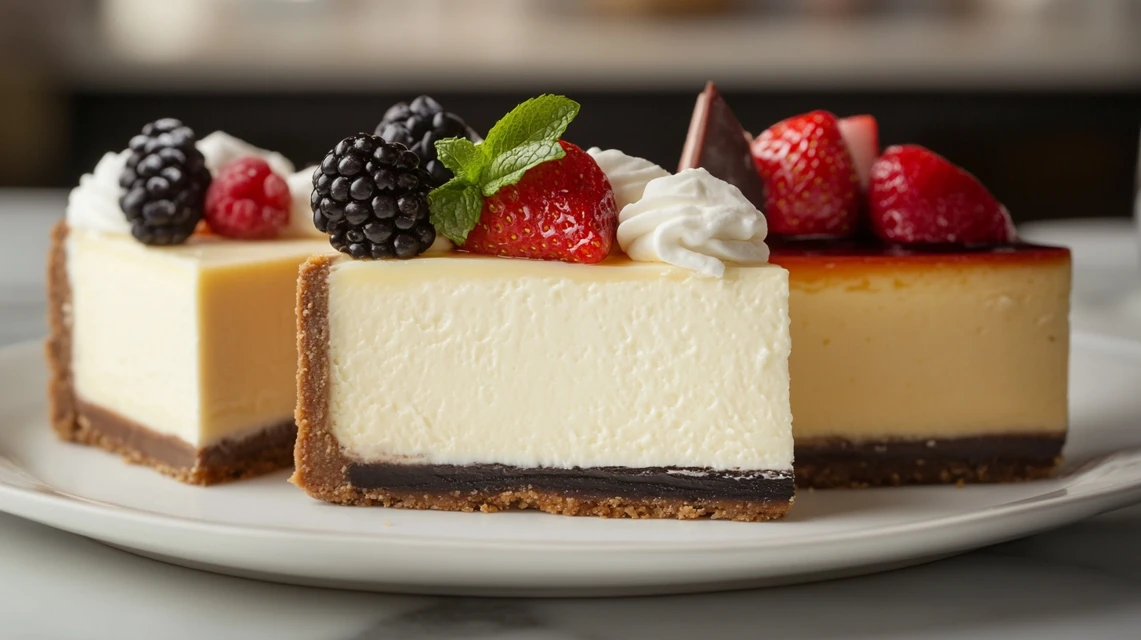Philadelphia cheesecake filling is loved for its creamy, rich texture and distinct tangy flavor, ideal for both baked and no-bake cheesecakes. This filling not only adds luxury to traditional cheesecakes but also works well in numerous dessert recipes. Let’s explore what goes into making this iconic filling.
Key Ingredients in Philadelphia Cheesecake Filling

The primary ingredients in Philadelphia cheesecake filling blend to create a delicious balance of flavor and texture. Here’s what you’ll typically find:
- Cream Cheese: The main component, providing the dense, creamy base.
- Sugar: Adds sweetness and balances the tang of the cream cheese.
- Heavy Cream: Adds richness, making the filling light and fluffy, especially in no-bake versions.
- Gelatin or Stabilizers (for no-bake options): Help the filling hold its shape.
- Flavor Enhancers (like Vanilla Extract and Lemon Juice): Add depth to the flavor profile.
- Preservatives and Additives (in commercial versions): These extend shelf life and improve consistency.
For further insights on different cheesecake varieties, check out this guide on types of cheesecake fillings, which discusses various ingredients and methods to achieve ideal textures.
Nutritional Composition of Philadelphia Cheesecake Filling
Understanding the nutritional breakdown of Philadelphia cheesecake filling can help you decide if it fits your diet. A typical serving contains:
- Calories: 200-300 calories per serving, depending on portion size.
- Fats: High-fat content from cream cheese and heavy cream adds richness.
- Protein: Contains moderate protein due to the dairy ingredients.
- Sugars: Adds sweetness but also contributes to the carbohydrate content.
If you’re curious about making healthier versions, you may want to explore low-calorie cheesecake alternatives, which offer guidance on ingredient substitutions for lower-calorie options.
How to Make Philadelphia Cheesecake Filling at Home

Whether you’re baking or making a no-bake cheesecake, Philadelphia cheesecake filling is straightforward to prepare. Here’s a quick guide for both methods:
Baked Cheesecake Filling
- Mix Ingredients: Start with softened cream cheese, sugar, eggs, and vanilla extract.
- Pour and Bake: Pour the mixture into a crust and bake at 325°F until set (around 50 minutes).
- Cool and Chill: Allow it to cool completely, then refrigerate for at least 4 hours before serving.
No-Bake Cheesecake Filling
- Prepare Gelatin: Dissolve unflavored gelatin in water for stability.
- Combine Ingredients: Mix cream cheese, sugar, heavy cream, and vanilla extract, incorporating the gelatin.
- Chill and Set: Pour into a crust and refrigerate for 6 hours to set.
For more tips on perfect cheesecake texture, this no-bake cheesecake filling guide offers additional techniques and variations to ensure your filling turns out beautifully.
Popular Variations of Philadelphia Cheesecake Filling
Philadelphia cheesecake filling is versatile and can be modified for unique flavors:
- Fruit Flavors: Incorporate berries, citrus zest, or mango for a refreshing twist.
- Chocolate and Caramel: Melt chocolate or swirl in caramel to create a rich, indulgent dessert.
- Savory Cheesecake Fillings: Use herbs and spices for a less traditional, savory option.
For inspiration on incorporating flavors, check out this blueberry cheesecake recipe guide, which includes tips for fruit-infused fillings.
Comparing Philadelphia Cheesecake Filling to Other Cheesecake Fillings

Philadelphia cheesecake filling stands out among competitors. Here’s how it compares:
- Taste and Texture: Known for its smooth, creamy texture and tangy flavor.
- Ingredient Quality: Philadelphia uses premium cream cheese, with stabilizers in commercial versions for longer shelf life.
For more on differences between types of cheesecakes, explore this article on New York-style vs. Philadelphia-style cheesecake, which outlines distinct features between popular styles.
Health Considerations and Dietary Modifications
Philadelphia cheesecake filling is a calorie-rich dessert, but it’s also adaptable for different dietary preferences:
- Caloric Content: High in fat and sugar, ideal for occasional indulgences.
- Lactose-Free Options: For lactose intolerance, use lactose-free cream cheese and heavy cream.
- Low-Sugar Versions: Substitute low-fat cream cheese or reduce the sugar for a lighter alternative.
Looking for tips on low-carb cheesecakes? Check out keto-friendly cheesecake options for ingredient swaps that reduce sugar and carbs.
FAQs About Philadelphia Cheesecake Filling
Here are answers to common questions about Philadelphia cheesecake filling:
- What makes Philadelphia cheesecake filling unique? Its smooth texture and tangy flavor set it apart.
- Can it be used as frosting? Absolutely; it works well on cakes and cupcakes.
- How long does it last in the fridge? Up to 5 days if properly stored.
- What are substitutes for cream cheese? Mascarpone is an option for a milder flavor.
- Is it gluten-free? The filling itself is gluten-free, but check crust ingredients if making a full cheesecake.
Conclusion
Philadelphia cheesecake filling is a creamy, flavorful option for a variety of desserts. Whether you prefer a classic cheesecake or enjoy experimenting with new flavors, this filling provides a delicious, versatile base.

